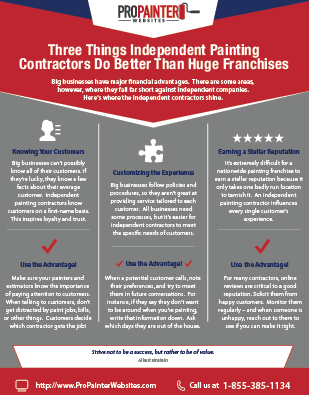In What Ways Do Ideal Colors Affect Your Brand'S Visual Charm In Commercial External Paint? Uncover The Crucial Considerations That Shape Your Choices
In What Ways Do Ideal Colors Affect Your Brand'S Visual Charm In Commercial External Paint? Uncover The Crucial Considerations That Shape Your Choices
Blog Article
Authored By-Hollis Sexton
When it concerns business exterior painting, the shades you select can make or damage your brand name's allure. Recognizing how various colors affect understanding is crucial to bring in consumers and developing trust. However it's not practically individual choice; neighborhood fads and regulations play a significant role also. So, exactly how do you discover the excellent balance in between your vision and what resonates with the neighborhood? Let's check out the crucial aspects that lead your color choices.
Recognizing Color Psychology and Its Effect On Service
When you choose colors for your service's exterior, recognizing color psychology can considerably affect exactly how possible clients regard your brand.
Colors stimulate emotions and established the tone for your organization. As an example, blue often shares trust and professionalism and trust, making it suitable for financial institutions. Red can create a sense of urgency, ideal for restaurants and inventory-clearance sale.
At the same time, environment-friendly symbolizes growth and sustainability, attracting eco-conscious consumers. Yellow grabs focus and triggers positive outlook, but too much can overwhelm.
Consider your target audience and the message you wish to send. By picking the appropriate colors, you not just improve your aesthetic allure however also straighten your image with your brand values, eventually driving client interaction and commitment.
Studying Citizen Trends and Regulations
Just how can you ensure your external painting choices resonate with the neighborhood? Start by looking into neighborhood fads. Browse through nearby businesses and observe their color schemes.
Take professional commercial painters of what's prominent and what feels out of place. This'll help you straighten your choices with community aesthetic appeals.
Next off, mouse click the up coming web site . Many towns have guidelines on exterior shades, specifically in historic areas. You don't want to hang out and money on a combination that isn't compliant.
Engage with regional business owners or area groups to gather insights. They can supply useful comments on what shades are well-received.
Tips for Balancing With the Surrounding Environment
To produce a cohesive look that blends effortlessly with your surroundings, consider the natural surroundings and building styles close by. Begin by observing the shades of nearby buildings and landscapes. Earthy tones like environment-friendlies, browns, and low-key grays typically work well in all-natural settings.
If your building is near vibrant city areas, you might select bolder hues that mirror the neighborhood energy.
Next, think of the building style of your structure. Conventional styles may benefit from classic colors, while modern layouts can accept contemporary combinations.
Evaluate your shade selections with samples on the wall to see how they communicate with the light and environment.
Finally, remember any kind of local standards or community looks to ensure your choice boosts, instead of clashes with, the environments.
Final thought
In conclusion, selecting the best shades for your business outside isn't almost aesthetics; it's a calculated choice that affects your brand name's understanding. By using color psychology, thinking about neighborhood fads, and ensuring consistency with your surroundings, you'll produce an inviting environment that draws in consumers. Do not neglect to evaluate examples before dedicating! With the best strategy, you can raise your organization's visual charm and foster enduring consumer engagement and commitment.
